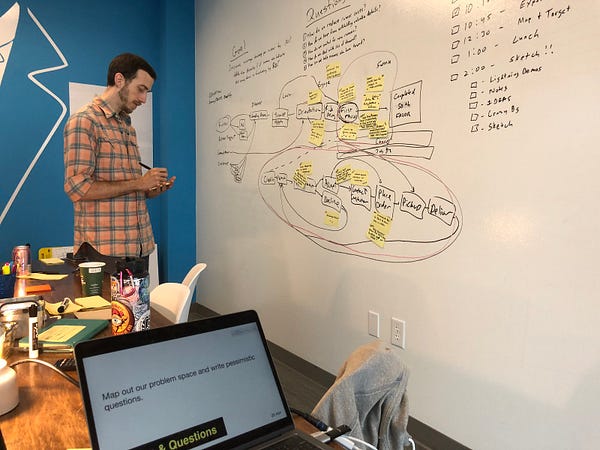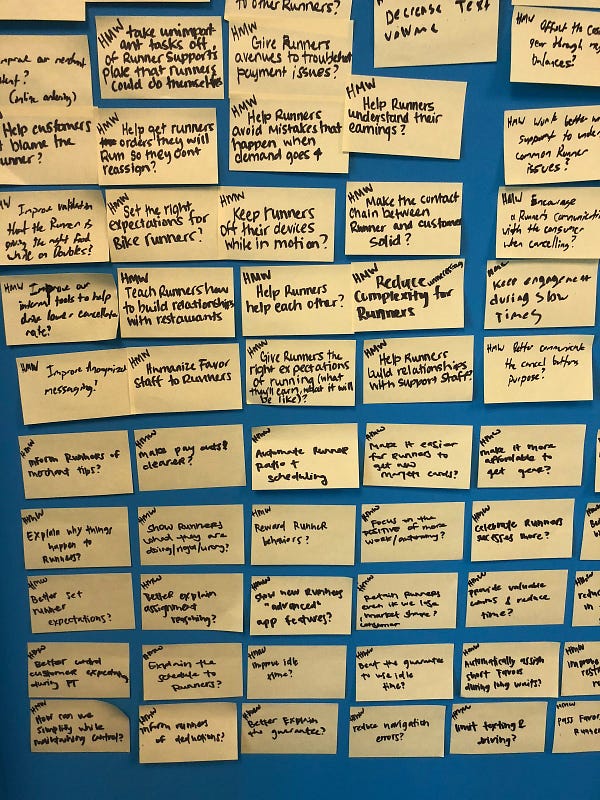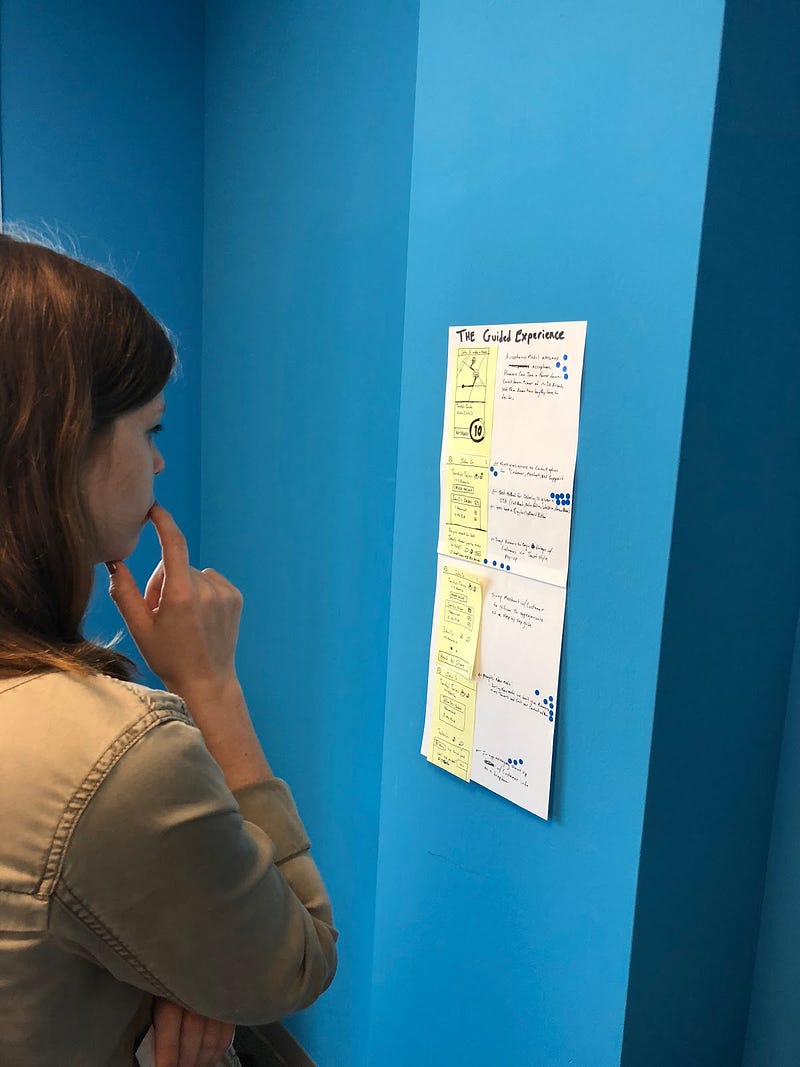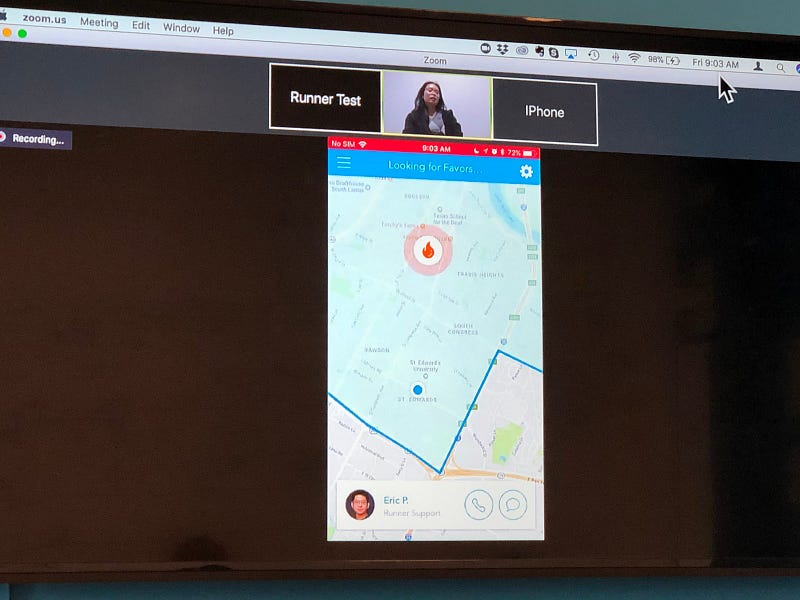At Favor, we’re no stranger to the benefits of user-centered design. But like many organizations, we can get sometimes let short-term evolutionary improvements get in the way of longer-term revolutionary leaps forward. This is why we recently decided to take our team through a Design Sprint to kickstart a key initiative that is on the engineering roadmap for a future quarter, but hadn’t yet received dedicated focus.
At the end of the day, we needed to take some time away from the urgent and focus on the important.

If you’re not familiar with what we do, Favor is an on-demand delivery company that lets consumers get anything they want delivered in under an hour. How do we make this happen? We have a community of thousands of delivery drivers (we call them Runners) who are arguably our most important stakeholders. At the end of the day, happy Runners deliver great service to our customers, so we spend a lot of our time thinking about how to serve our Runners.
We brought in Voltage Control, a company here in Austin that facilitates sprints, to lead us through a structured week of activities to help us improve the earnings (and happiness!) of our Runners. The process was fun, fruitful, and we found that the impact continues beyond the short time we spent in the sprint.
Our Challenge
INCREASE AVERAGE HOURLY EARNINGS PER RUNNER BY 10% WHILE ALSO DECREASING RUNNERS WHO INDICATE THAT RUNNING IS FRUSTRATING BY 50%.
The Sprint
While the ideal sprint length is one week, we only had four days to dedicate, but we made it work in the shorter time span. Here’s what our week looked like and our activities each day…
DAY 1
We started our week by examining our long-term goal. We refined it by asking where we wanted to be in year with this project and noting questions that we hoped to answer. We agreed that we would aim to both increase runner’s earnings and decrease their frustration.


We spoke to key members of the Favor team with deep understanding of a Favor Runner’s journey to discover current pain points and areas of strength. As we listened to experts and identified areas that we needed to improve, we crafted “How Might We?” notes, reframing problems as opportunities.


We each used notation and sketching processes to craft a final sketch of a potential solution. We hung these on the wall to examine individually.
DAY 2
We reviewed each individual’s sketch and voted on areas of promise. We then selected one sketch as a potential solution to prototype and chose features from other sketches that we wanted to integrate. With all of this in mind, we created a storyboard to plan our user’s journey through our prototype.

DAY 3
We divvied up the prototyping work to be done into different roles, with some people gathering content, some building the screens in Sketch, and some stitching the screens together into a usable prototype.
Meanwhile, we worked to create a thorough, scenario-based testing plan of our prototype and recruited real, experienced Favor Runners to come in and test our solution on Day 4.

DAY 4
We tested our prototype with users in a makeshift research lab environment. In one room, the interviewer talked with a subject, while in another, the rest of team could watch the Runner and the prototype, discuss, and take notes. We compared notes looking for consensus and documented these insights to inform our next prototype.

Real Results
In only four days, we were able to find a new direction for the next iterations of our Runner app. We’re looking forward to bringing some of the best ideas we came up in the sprint to life. More importantly, we’re thrilled to know what Runners DON’T value so we can focus our energies on the pieces of the app that matter. Here are some of the key outcomes our our Design Sprint:
INSIGHTS: We revealed 35 individual insights into what our Runners value, need, and expect out of the next Runner app.
ALIGNMENT: We got cross-functional buy-in by assembling a diverse sprint team of Favor employees from 5 different specialties.
VALIDATION: We tested out new features and UI elements prior to sinking development time and money into building them.
“We started with all these ideas about what our users wanted and needed in the next version of our app. The design sprint made us rapidly validate these assumptions instead of getting months down the road and realizing we were designing things our users didn’t want or need. In one week, we were able to build a solid foundation for our redesign from real user feedback..”
-Meg Nidever, UX Designer, Favor Delivery
Lasting Change
One of the coolest things about our Design Sprint is that its effects are lasting far beyond the four days we spent. It reminded our team how valuable prototyping and early user feedback can be in building great designs. It also helped expose some of our top performers in other departments to the product design process.
If you have a high performing team with a big project that needs a jumpstart, I can’t recommend a Design Sprint enough.




